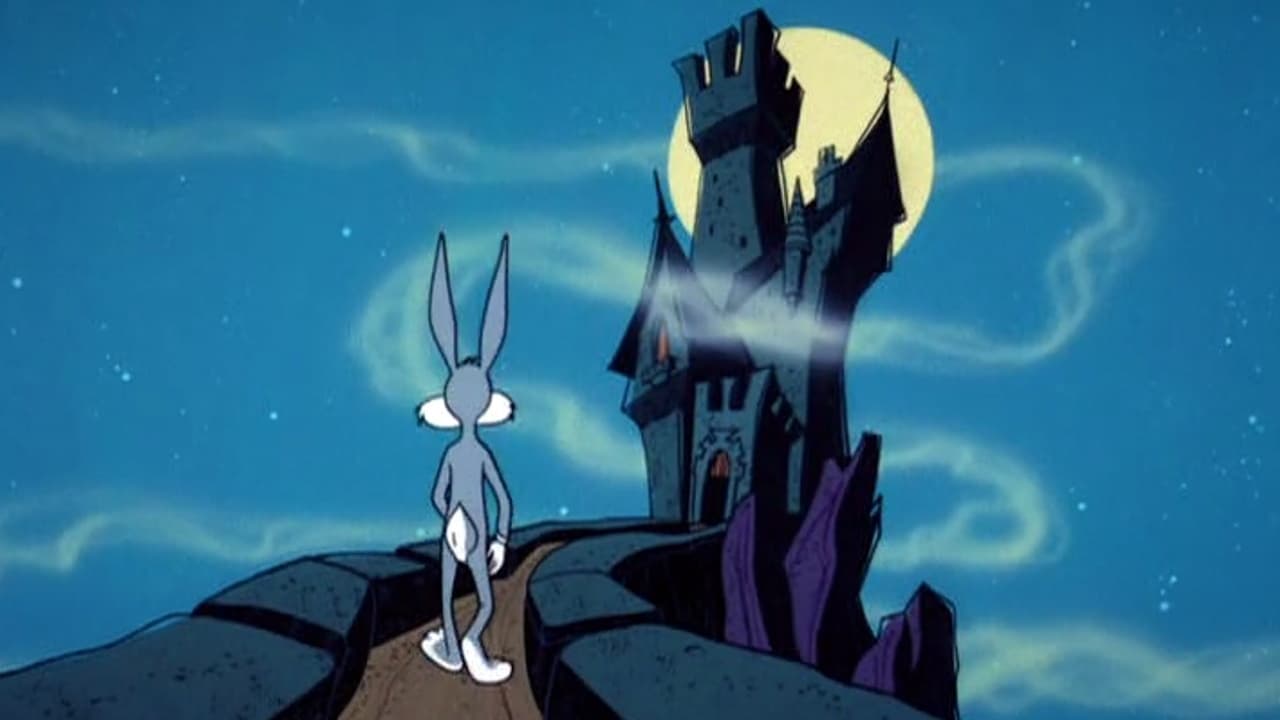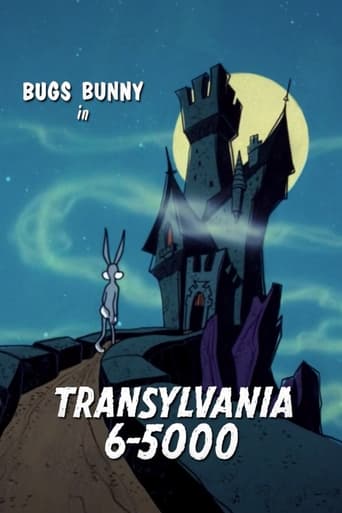

Written by John Dunn, directed by Chuck Jones and Maurice Noble, with a music score by Bill Lava, "Transylvania 6-5000" is one of the later Bugs Bunny cartoons made at Warner Bros., and not a bad cartoon at that. It may not be the funniest Bugs cartoon ever made, but it still contains plenty of verbal & visual gags as Bugs (who has lost his bearings) visits a spooky haunted house in order to telephone his travel agency. (Don't read any further if you have not yet seen this cartoon.) Bugs at first has no idea of the power of the magic words "abracadabra" and "hocus pocus"; often he'll sing these words to the tune of "It's Magic". The utterances of these magic words causes the majordomo Count Bloodcount to transform into a bat, or vice versa, which becomes a problem for gravity. This is what I like best about "Transylvania 6-5000". Good for Halloween or any old time!
... View MoreWith both Bugs Bunny's and Chuck Jones's Warner Bros. careers winding down, Chuck directed Bugs in the hilariously wacky short "Transylvania 6-5000" (which I recall got used in the compilation film "Daffy Duck's Quackbusters"). When Bugs arrives in Transylvania - apparently no too far away from Pittsburgh - and spots a rather Gothic castle, he decides to ask to use Count Bloodcount's telephone. While the audience can easily figure out what this guy has planned, Bugs doesn't even get the least bit scared (I bet that any other of the Looney Tunes would have died of fright upon seeing the count; see the Sylvester/Porky pairings).But when the count puts Bugs to bed ("Rest is good for the blood.") is when the cartoon really takes off. As Bugs feels too fatty-gewed (fatigued) to sleep, he starts reading the book "Magic Words and Phrases". Much of the rest of the cartoon has Bugs in danger of getting attacked by the count, only to utter "abra-cadabra" or "hocus pocus" and change the count into a bat or vice versa! Everything that Bugs does in the second half of the cartoon just made me feel like I was going to die laughing.It all just goes to show that there will never again be a genre like the Looney Tunes/Merrie Melodies cartoons. Up in that great nightclub in the sky, Glenn Miller must feel honored that they played off the title of one of his songs for this cartoon (actually I don't know whether or not he wrote "Pennsylvania 6-5000", but I've heard his version). There was also a silly movie "Transylvania 6-5000" starring Jeff Goldblum and Ed Begley Jr.One more thing. I notice that this cartoon was released a week after the Kennedy assassination. I would have suspected that they would have been in no mood to release a crazy cartoon after that event, but maybe that's just me.
... View MoreOver his career as a cartoon director at Warner's, Chuck Jones crafted quite a few eerie cartoons, including a Sylvester-Porky trilogy which began with "Scaredy Cat." Jones never got around to putting the terrified cat and naive pig in a vampire's lair, but let Bugs take that turn instead. Bugs, like Porky in the earlier films, seems to be unaware of the danger he's in. He remains cheerful, and much of the film's humor comes from the way he maintains his aplomb against a shadowy background of coffin-shaped doorways, skull-and-bone carvings, and rotting drapes.The vampire he faces is not a generic Lugosi/Dracula type. Count Bloodcount is a distinctive character in his own right thanks to voice artist Ben Frommer and a crew of talented animators with Ken Harris foremost among them. Co-director Maurice Noble encouraged layout man Bob Givens and background artist Phil DeGuard to devise scenes which would have had Sylvester wide-eyed and shuddering. Musician William Lava used his ominous style to lend suitable aural touches to this frightfully good cartoon.-Tony
... View MoreThis Bugs Bunny is one of the better Bugs shorts done in the 1960s, when Warners cartoons were starting to vary greatly in terms of quality. This one is reasonably good and can actually compare favorably with the earlier work. Having Chuck Jones and Maurice Noble helps. Cartoon fans may notice slight but notable similarities to a later Inspector Clouseau short, Transylvania Mania. The similarities can be explained by the fact that both shorts were written by John Dunn, who wrote for Warners, MGM and Depatie-Freleng in the 1960s! He was definitely kept busy. More verbal jokes than usual but a fair number of sight gags. Worth Watching. Recommended.
... View More